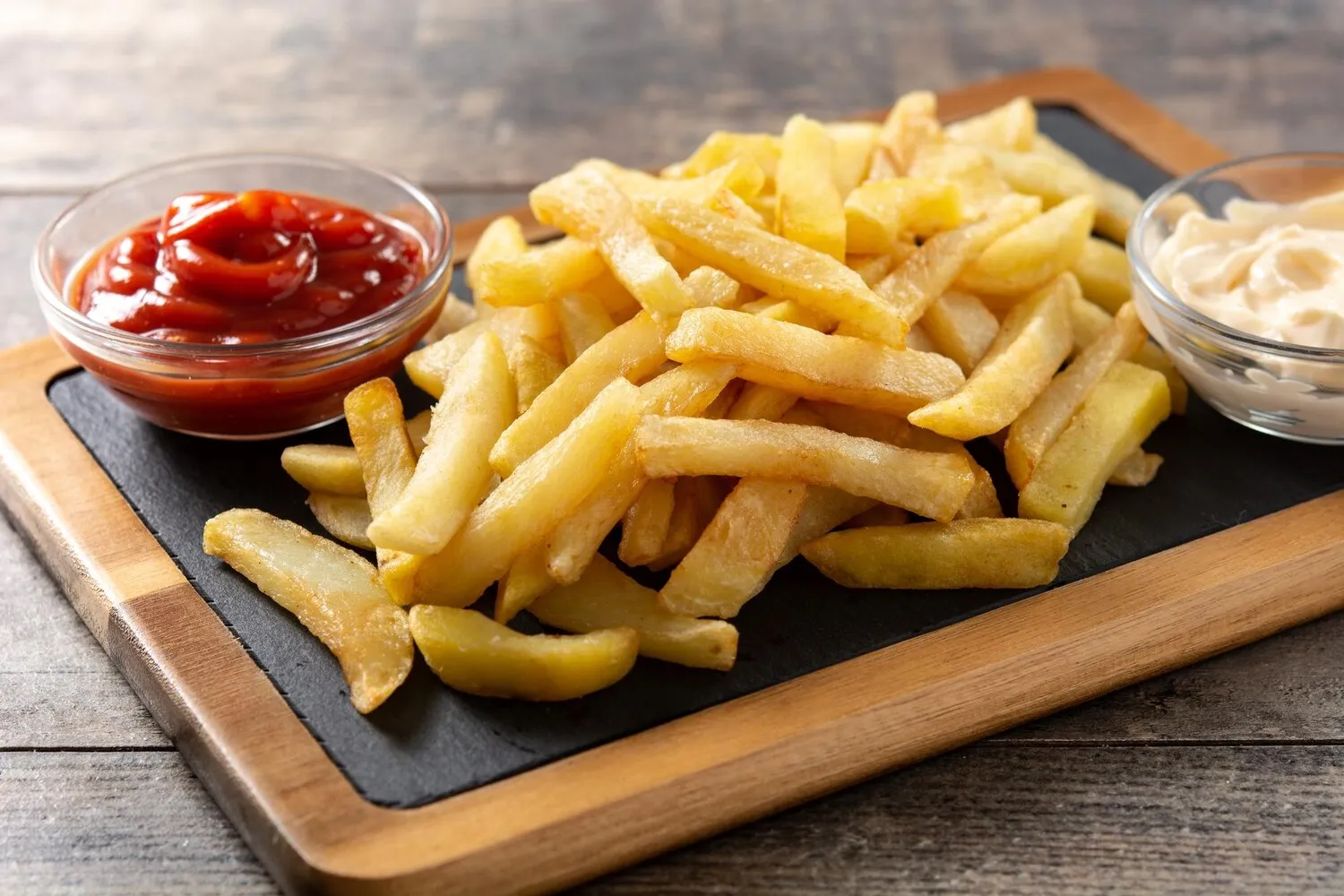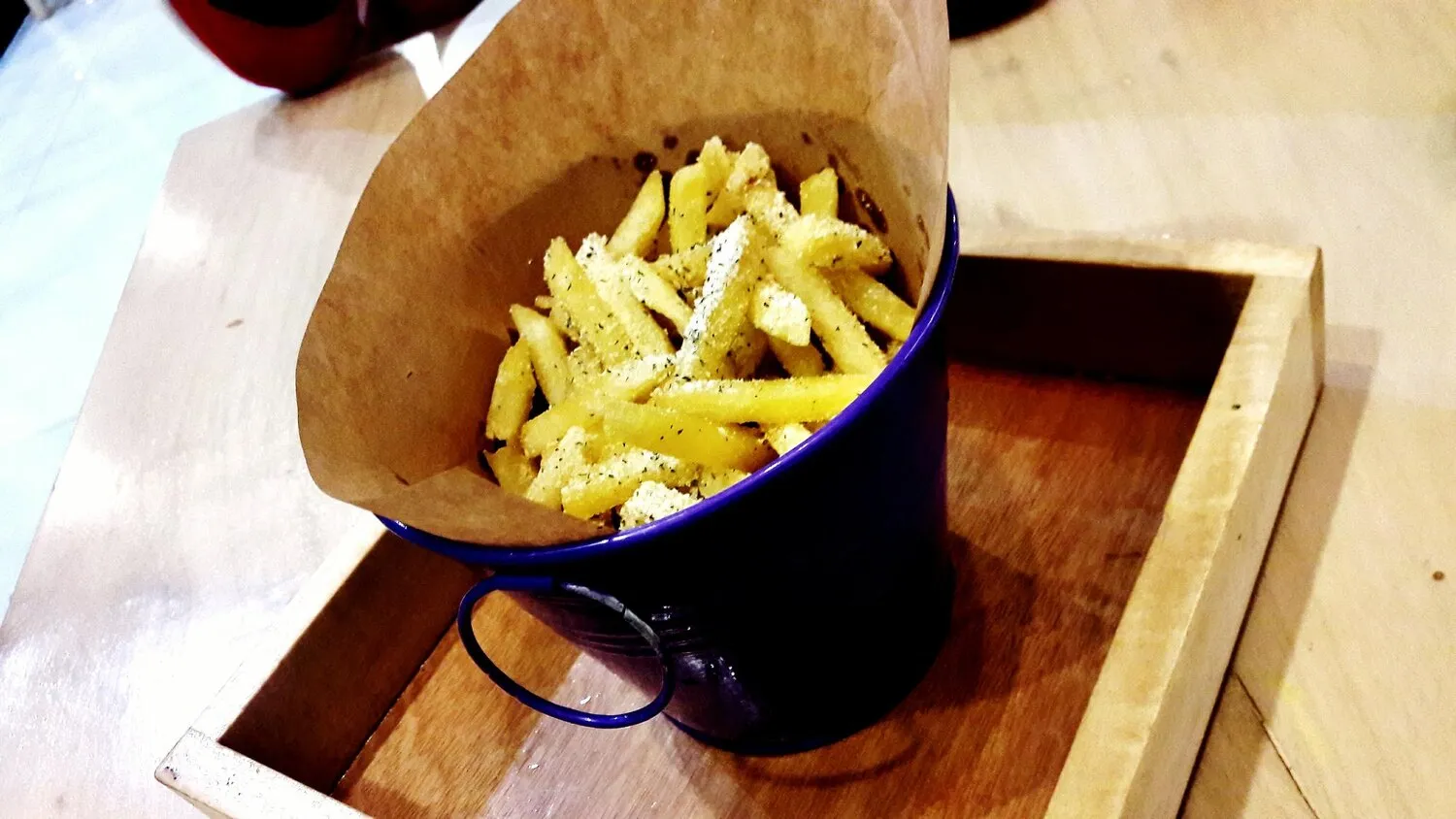
Fries
Crispy fries.
Nutrition Facts
* The % Daily Value (DV) tells you how much a nutrient in a serving of food contributes to a daily diet. 2,000 calories a day is used for general nutrition advice.
The exact origin of fries is debated, with both Belgium and France claiming their invention. What is known is that potatoes were introduced to Europe in the 16th century and quickly became a staple food for the poor. The idea of frying potatoes into sticks emerged sometime later, with the Belgian version possibly dating back to the late 17th century when river freezing prevented fishing.
Fries are a ubiquitous and beloved food enjoyed globally, representing comfort, indulgence, and social connection. They are a staple in fast-food culture and a popular side dish in many cuisines.
Fast Food Staple
Fries are a cornerstone of the fast-food industry worldwide, often served alongside burgers, chicken nuggets, and other popular items. They represent a quick, convenient, and affordable meal option.
Social Food
Fries are often shared among friends and family, particularly in casual dining settings. Their communal nature contributes to their cultural appeal.
Cultural Variations
While the basic concept of fried potato sticks remains consistent, cultural variations exist. For example, poutine in Canada features fries topped with cheese curds and gravy, while loaded fries in the United States can include various toppings like chili, cheese, bacon, and vegetables.
Fries primarily deliver savory and starchy flavors, enhanced by salt and the frying oil's characteristics. Secondary flavors come from the dipping sauces or toppings.
The core flavor profile of fries is determined by the potato variety, the type of oil used for frying (e.g., beef fat, vegetable oil), and the amount of salt added. Russet potatoes are popular due to their high starch content, which leads to a fluffy interior and crispy exterior. Dipping sauces, such as ketchup, mayonnaise, mustard, or aioli, add contrasting sweet, tangy, spicy, or creamy elements. Seasonings like paprika, garlic powder, or parmesan cheese can also alter the flavor.
Double Frying
For optimal crispiness, fry the potatoes twice. The first fry at a lower temperature cooks the inside, while the second fry at a higher temperature crisps the outside.
Potato Preparation
Soaking the cut potatoes in cold water before frying helps remove excess starch, resulting in crispier fries. Thoroughly dry the potatoes after soaking to prevent splattering in the hot oil.
Oil Temperature
Maintaining the correct oil temperature is crucial. Too low, and the fries will be soggy; too high, and they will burn on the outside before the inside is cooked. Use a thermometer to monitor the oil temperature during frying.
Salt after Frying
Salt the fries immediately after removing them from the oil. The oil helps the salt adhere to the surface.
Explore additional Fries dishes and restaurants
Explore FriesDiscover top dining spots and culinary experiences in Gent.
Explore GentLearn more about the food culture, restaurant scene, and culinary heritage of Belgium.
Explore Belgium
